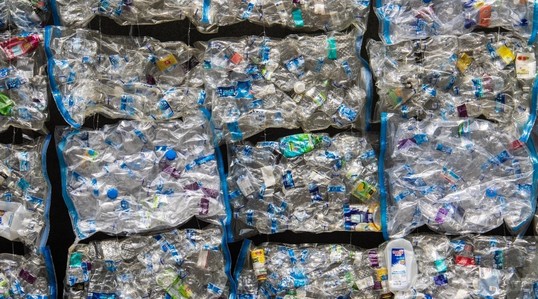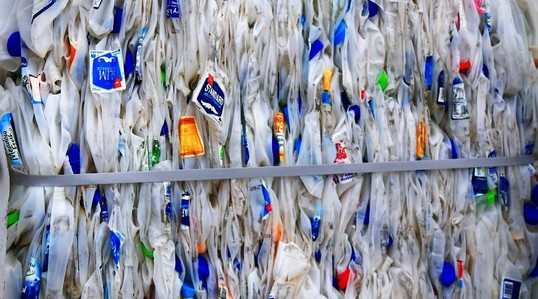What Really Happens To The Recycled Plastic?
We are inundated with advertisements urging us to recycle more now that the world is aware of the threat posed by plastic pollution. Many of us recycle with great care, but what happens to recycled plastic after it is collected?
Household recycling is transported to a facility for sorting, where machines and workers divide it into various categories, such as plastic, paper and cardboard, aluminum, and general trash.
You would think that most plastic waste gets recycled, but that is not the case. According to OECD, only 10 percent of plastic worldwide is recycled.
The domestic plastic packaging we take out for recycling and other plastic debris winds up in incineration plants in thousands of tonnes each year.
Incinerators are enormous burners for waste incineration, and as trash is trucked in and smoke rises from the chimneys, they produce trash, air pollution, odors, and noise. Some waste also ends up in landfills, where they can release hazardous chemicals into the atmosphere.
Despite this, the best ways to deal with our plastic problem remain to use less of it and reuse and recycle as much as you can. Understanding what happens to recycled plastic can help you take the proper steps to ensure that your plastic waste does not end up in landfills or incineration plants.
Recycling Plastic Begins at Home
While you might believe that when you throw an old plastic bottle in your home's recycling bin, it is not recycled, even worse, if you don't take the extra step of rinsing the container, you might jeopardize the chances of other things in your bin being recycled.
Limiting wish-cycling—the propensity to throw every type of plastic into a bin and expect that it gets recycled—makes recycling plastic more successful. Make sure that whatever you put in the recycling bin can be recycled and does not have to end up in landfills or incineration plants to be disposed of.
Your Recyclable Plastic is Picked Up

Plastic bottles will typically be picked up by garbage collectors in a recycling truck on recycling day after being thrown into the recycling bin. However, not all cities and municipalities have recycling programs, and not all items are recyclable.
The Recycling Plastic Is Sorted
The recyclable plastic is picked up and taken to a local collection point or material recovery facility (MRF), where it enters a sorting mechanism.
Depending on the facility, humans, optical scanners, or a combination of both may perform the sorting. Paper, glass, and other non-recyclable components are isolated from PET bottles. Waste that cannot be recycled is dumped in a landfill.
The Post-Sorting Stage
The PET bottles are pulverized and packaged individually at the factory after being separated. Before the plastic proceeds through the remainder of the recycling process, the fragments are screened to eliminate contaminants like paper. But don't give up; there are methods for recycling almost anything.
Bales of Plastic are Sold

The MRF then sells the plastic bales to manufacturers, who use recycled plastic to create new items.
A recycling baler system keeps the plastic in its unprocessed state to reuse the resources and stop the plastic from harming the environment.
Using a plastic baler can help you save a ton of money. It is so that you can recycle your plastic waste while using a baler. By baling your plastics and transporting them to a recycling facility, you can recoup some of the money you would have spent on disposable plastics. It can significantly lower your trash costs for you.
Plastic balers generate less waste that ends up in landfills is the main benefit of using them. Instead, the plastics you feed into the baler are recycled and used to create new goods.
Additionally, by lowering the number of goods you send to a landfill, you reduce the requirement for trash management. That helps to save money, time, and the environment!
To give an example, the majority of recycled plastic used in clothes is made of a substance called PET. Due to its strength, flexibility, and lightweight, this is the substance used to make bottles and textiles. PET creates more than 50 percent of all synthetic fibers worldwide.
It may be tough to fathom turning single-use plastic into clothing. But, as Plastic Bale Recycling advances, we'll see more clothing manufactured from fishing nets or recycled bottles, which are then converted into fabrics.
We can reduce the processes needed to cultivate materials like cotton, which, when used to make apparel the old-fashioned way, uses a lot of resources like water.
New Products Are Created From Recycled Plastic
Each sorted and bagged material is sent to end destinations and used to create new raw materials after a whole truckload of it is prepared. However, certain materials are churned into fiber or crushed into tiny particles rather than being pelletized or diced. Manufacturers purchase these raw materials and use them to create new products.
Many items, like plastic bottles and paper, are recycled into their original uses, completing the product cycle. Some are changed into entirely new goods.
Numerous products can be made from recycled post-consumer plastics, such as repurposed polyester for apparel, carpeting, and playground equipment and recycled plastic construction materials for flooring.
New plastic bottles, boxes for cosmetics, and strong plastics like plant holders are other items that can be produced using recycled plastic.
Final Word
You probably have a good idea of what happens to recycled plastic. A lot of the plastic waste in the UAE and across the globe still ends up in landfills; systems that can help utilize this waste as a resource can provide several advantages, including helping to cut down on our use of virgin raw materials, repurpose products for new uses, cut down on carbon dioxide emissions, and preserve the environment.
At RECAPP we strive to demonstrate to the world the many advantages that products created from recycled plastic can have over conventional ones. We not only assist in lowering the quantity of plastic waste dumped in landfills but also improve resource management and lessen environmental impact.
We are here to let you know the goods that can be manufactured using recycled plastic, irrespective of the type or volume of recyclable plastic you have available. You can join our revolution and contribute to a better world.
